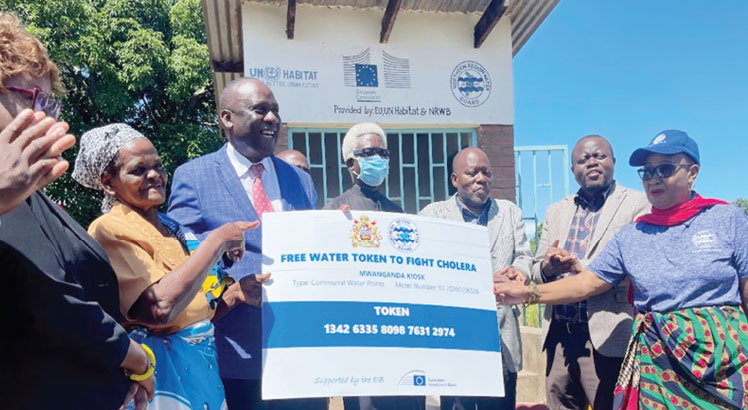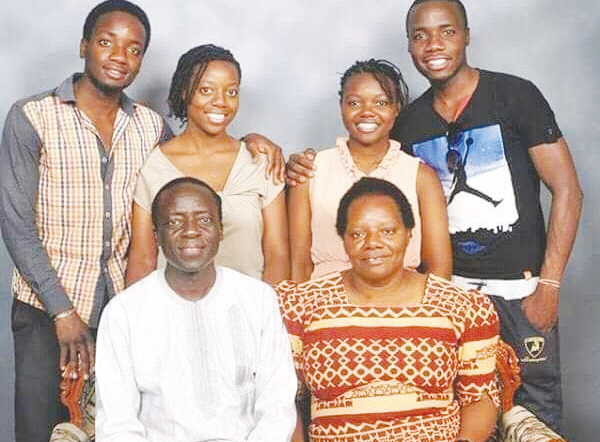Celebrating St Patrick’s Day in Rumphi

The festival of St Patrick’s may be a remote reality in Malawi, but it is a day to remember at a school in Rumphi. JAMES CHAVULA attended the Irish holiday at St Patricks Seminary Saturday last week.
The festival of St Patricks is the day everyone is Irish, it is said. Nothing can be more hyperbolic since Malawians are not as overjoyed with March 17 as the Irish.
However, the saying holds true about the mood within the bounds of St Patrick’s Seminary in Rumphi.
Those that have passed through the corridors of the school named after the saint credited with converting Ireland to Christianity have seen the Irish holiday come and go in spectacular style.
From sunrise to sunset, both teachers and learners go on holiday as either Bishop of the Mzuzu Diocese Joseph Zuza or his Karonga counterpart Dr Martin Mtumbuka breaks from his busy schedules to lead them in commemorating the centrality of the saint who converted Ireland.
As the community at the foot of Vyeyo Mountain go through the festivities from an 8.30am mass in the chapel on campus to the entertainment gig that ends with ‘lights out’ screams, it is easy to think it’s just another routine.
Actually, some seem to reduce the Festival of St Patricks to a luncheon which gives the student body accustomed to nsima with beans or vegetables a taste of rice with pork, soft drinks and fruits.
Why should the students, both past and new, bother about the patron saint of Ireland who hardly sparks a stir among their people of Mlongoti and other villages in the neighbourhood of St Patricks?
The question has been lingering for the past decades and it was the one Zuza was trying to answer when old and new students met at the hillside school for belated St Patrick’s Day on Saturday, March 22 2014.
“This is the day we remember St Patricks who converted Ireland. Some literature shows that Patrick preached and converted all of Ireland [in 40 years], but what is certain is that he played a crucial role in taking the gospel to the gentiles in Ireland and other ends of the world,” said Zuza of the one-time slave who spent age 15 to 20 tending to sheep and cows in captivity.
Catholic online fact sheets show the saint, formerly a priest and bishop, was humble, pious and gentle—the virtues that ought to be emulated by all individuals and institutions named after him.
But many are stories associated with Patrick and the ways many observe the day. However, the use of green colour is predominant.
As the West plunges into themed parties, it is nearly impossible to find Malawians celebrating the day in green clothes or consuming food and drinks naturally or dyed green in keeping tradition.
Calm and business as usual is usually the prevailing mood at Mlongoti and other villages in the vicinity of the seminary. The villagers do business as usual, tending to their maize fields and selling sugarcane, as the seminarians pay homage to their patron saint.
Even the seminary is not green either. No shamrock leaves. Instead, it is the school uniform—black shirts and pairs of white trousers—that welcomes visitors venturing into the St Patrick’s fence.
Some Americans may have painted the waters of Chicago River green in 2005, three years before former students formed St Patrick’s Seminary Foundation as their meeting point.
By contrast, the alumni foundation affiliated with the school in Rumphi are investing their energy in painting the Irish holiday into a parade of charity—a day they go back and help more than just their alma mater.
Father Daniel Kamanga, the rector in charge of the seminary, says the former students’ footprints back to the seminary are clear: Aging buildings are wearing a new coat of paint; broken desks have been replaced with new ones; almost every learner can afford access to books.
Even the laboratories for biology and physical science have been renovated, painted and restocked with basic needs.
“We are lucky to have produced wonderful boys who always remember to visit their former school. Their contribution to the seminary is priceless,” said Kamanga.
It may as well be a great reminder that it does not take one to become president or high-ranking politician to help the learning institutions where they trace their roots.
The wait for politicians to rise to power for alumni to spring forward came to a new low in 2011 when Henry Henderson Institute in Blantyre churned out adverts insinuating that fallen president Bingu wa Mutharika and his brother Peter passed through its corridors.
Peter, formerly Minister of Education, might have publicly declined the false honour bestowed on him in the run-up to the big day in 2011, but he passed a two-pronged verdict.
First, he said the country needs vibrant alumni associations to help solve the numerous problems affecting schools.
Second, the disconnect between schools and their graduates is clear in public university graduates’ failure to repay tuition loans and companies’ inertia to see nothing wrong with being surrounded by falling schools in need of their help.
Founded in 2008, St Patricks Foundation has been pivotal in bridging the gap.
Just Saturday last week, its leader Dr Francis Chinjoka Gondwe and board chairperson Dr Mark Lungu presented a cheque worth K1.1 million for outstanding needs.
Such injections are a big boost because the money emanating from fees and donations is far less than what the institution needs to run properly. We don’t take the former boys for granted. We wish they were around much longer,” said Kamanga.
A visit to the school is an encounter with a precious institution dotted with a few old buildings marked by broken windows, falling ceilings and rusty roofs that perfectly illustrate why every tambala matters.
Why didn’t the foundation spring to life earlier than 2008?
According to its publicity secretary Isaac Cheke-Ziba, it was around 2004 when the ex-seminarians started talking about coming up with a group where they could meet, contribute to the well-being of St Patrick’s and interact with one another come rain or sunshine.
“Since the formation of the foundation, we have always seized St Patrick’s Day as an opportunity to go back to our beloved school, interact with the current crop and give some assistance as a way of acknowledging that we are what we are because of St Patricks,” he says.
And the news spirit of goodwill spills beyond the fence.
Having donated wheelchairs to St Magadelene Home of Students with Disability near Rumphi Primary School in 2011, they took their charity to Rumphi District Hospital where they donated sugar, soap and other items to children in the paediatric wards Saturday last week.
“It’s the first time I am seeing former students of a school coming together to help the hospital,” said Georgina Kanyangale, a nurse who took the group around the new and old wards.
Kanyangale said every little help matters to the patients as some of the needy guardians spend their productive hours—even weeks and months—attending to the seek.
“I wish more and more came forward to help because some patients hunger for specific meals but cannot get them because their guardians are almost nailed to the sick bed instead of doing income generating activities,” she said.
To Chinjoka Gondwe and company, this was their corporate social responsibility, one way of giving back to the hospital they used to frequent in tough times when they were boys at St Patrick’s where giving is receiving.
It’s better to give than to receive, reads the motto of school which represents many things to many. For Bishop Zuza, who exemplified the spirit of giving by passing around a jag of water to players during a football match between new and old seminarians, giving more could be one of the holy lessons drawn from the seemingly ugly game of boxing.
To onlookers, St Patrick’s is just a remote school at the foot of an equally unknown mountain.
To those who pass through its corridors, it is a milestone in the endless journey of discernment, the process of figuring out what they want to be for the rest of their lives.
For Zuza, there are no two ways about it.
“First and foremost, the seminary was established to produce priests,” says the bishop, who mobilised priests that passed through the school to drive the point home.
But this world is never without exceptions. Apart from producing priests in the line of Zuza, Mtumbuka and other servants of the church spread across Karonga and Mzuzu dioceses, St Patrick’s has been churning out an array of professionals who are serving the country in more ways than they themselves will ever understand.
These include engineers, lawyers, journalists, accountants, economists, environmentalists, health workers, entrepreneurs, teachers, politicians and activists.
Every time the people who opted for married life return to the priestly school, Fr Kamanga is left with a sense of pride that failure to go for priesthood is not the end of the world if ex-seminarians grow into reliable and responsible citizens of their world.
St Patrick’s Day encapsulates this conviction in a nutshell.






well articulated my brother. how i wish malawians emulated this spirit of ex st patricks seminary.